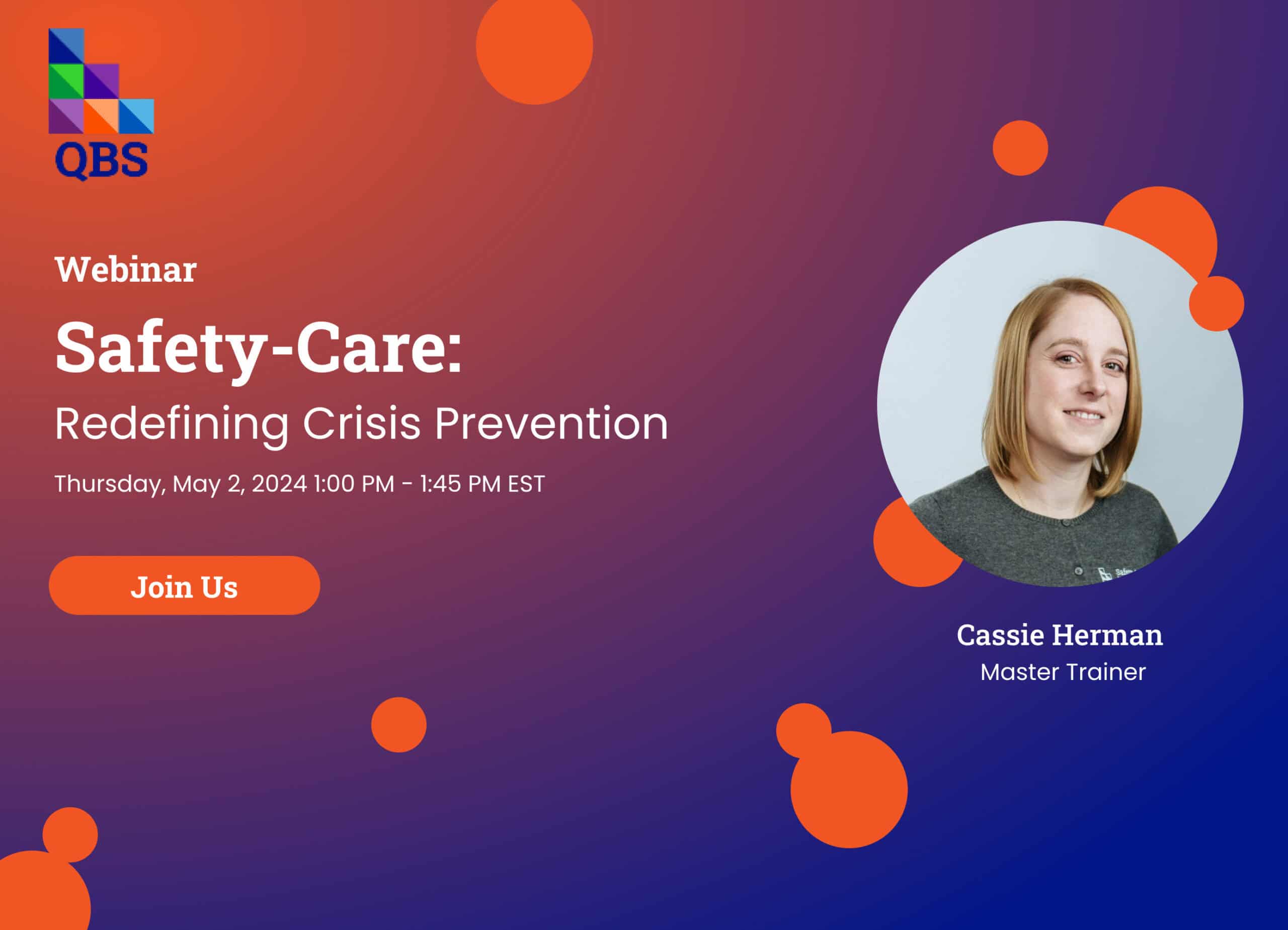Individuals may use challenging behavior to escape, delay, avoid a situation, task or instruction, or other non-preferred activity. When an individual escapes a situation by exhibiting challenging behavior, they will continue that behavior since it was effective in getting them the results they want.

Example: Caregiver Rachel asks individual Sam to clean up. Sam says “no!” and hits Rachel. Rachel says, “Sam – you need to take a break and calm down.”
In this example, Sam did not want to clean up and did not have to clean up after he hit Rachel. Since hitting got Sam the results he wanted, he will likely hit again next time he is asked to clean up.
De-escalation Strategies
A common myth is that using Safety Care de-escalation strategies might allow escape (“getting away with it”). This would unintentionally reinforce and increase challenging behavior.
Safety Care uses 3 de-escalation strategies: Help, Prompt, and Wait. These strategies are designed to help the individual engage in calmer, safer behavior while maintaining everyone’s safety. This does not force the individual to immediately comply with staff directives. Instead, Safety Care teaches communication, instructs likely behaviors, and withholds reinforcement from challenging behavior. While these may temporarily reinforce less severe or intense forms of the challenging behavior, it prevents the situation from escalating to more dangerous and unsafe behavior.
The chart above displays potential outcomes from the example with Sam.
- Rachel could have used Safety Care de-escalation strategies to prompt Sam to communicate that he needed a break. This would reinforce functional communication and teach Sam a way to escape cleaning up in a more appropriate way.
- If Rachel were to continue the instruction and physically force Sam to clean up, it is likely that the challenging behavior would become more intense and severe. As a result, Rachel may need to intervene using more restrictive strategies and Sam would still get out of cleaning up.
From both of these scenarios, Sam escapes cleaning up. In the first example, communication gets him a break. With the second example, more intense behavior gets him a break.
Additional Strategies to Manage Behavior
Geiger et al. (2010) provide additional recommendations when working with individuals who engage in challenging behavior maintained by escape:
- Provide choices of activities and tasks
- Ensure curriculum and tasks are an appropriate level and difficulty
- Start with few or no instructions and gradually increase
- Reinforce desirable behavior and withhold reinforcement from challenging behavior
- Avoid giving escape when the challenging behavior happens
- Every so often allow escape – just because!
“We can’t let them get away with it” may not be the safest or most practical option when dealing with challenging behavior. Safety Care recommends use of de-escalation strategies to effectively decrease and teach functional alternatives to challenging behavior.
For more information about Safety Care and de-escalation, please contact us at info@qbs.com.

